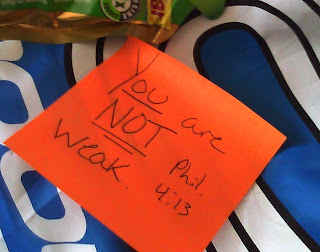Below we'll examine some of the recent research and opinion on the aforementioned question.
The importance of a good
coach and their respective attributes is a frequent topic in my professional,
athletic, and personal life (which is perhaps most important). Personally, I have been very fortunate to have
run with a coach since late 2008 and recently gaining some advice for swimming,
as I am entering the sport of Triathlon.
Both coaches are
awesome guys; very knowledgeable and have somewhat different styles (as
different sports obviously call for difference in approaches). And it is
working for me so far. I think I'll continue to become a more physically and
mentally tough athlete by experiencing multiple perspectives.
On the running side, I now have a few years experience and now know what kind of coach I work best with-open, innovative, and somebody I can collaborate with. In the water, however, I need that guidance, direction and being told "no" from time to time when I ask for more rest in between intervals. No pun intended, but I'm trying to be a "sponge" with what limited time I have in the water and learn as much as I can. I was once that 'sponge' when I received my first running schedule leading up to the 2009 Houston Marahon....
So, what makes a good coach? Definitely not a one-size-fits-all question. I’ll attempt here to unpack some of the tools I find helpful based on professional and personal experience; plus some principles from a recent article in the Journal of Sport Psychology in Action (2011).
So, what makes a good coach? Definitely not a one-size-fits-all question. I’ll attempt here to unpack some of the tools I find helpful based on professional and personal experience; plus some principles from a recent article in the Journal of Sport Psychology in Action (2011). When we think of a good coach, the following are often true of him or her….
· Possesses leadership qualities. Perhaps
the most obvious trait-a good coach can utilize both transformational (i.e.
ability to motivate and inspire) and task/skill-focused leadership. Even better
ones know when and where to use exercise these facets.
· Fosters autonomy. Guides the athlete, but
empowers them to think for themselves.
· Knows his or her athletes. As a sport
psychology consultant, I am always advocating for coaches to be as
athlete-centered as possible. Depending on the size of the team or group, this
aspect varies, but coaches who are most in tuned with who their working with
and know their tendencies elicit the most consistent success.
· Communicates clearly. Progress comes faster
from those who best explain clearly the objectives at hand.
· Educates the athlete. I find it highly valuable
when I know the purpose of the workout I'm doing. For head cases like me,
knowing the purpose of why I'm running x:xx pace helps me keep things in
perspective.
· Knows when to push and when to dial an athlete back-and sticks
to it (see communication).
· Brings out the best in their athletes. This
is one of the biggest intangibles, but I can think of a handful I have worked
with who fit that mold.
What are your experiences
coaching either coaching or being coached? What are some of the qualities you
look for? Sometimes it’s all about the ‘fit” in the athletes’ journey.
Source: Watson, J., Cannole, I., & Kadushin, P. (2011). Developing young athletes: A sport psychology based approach to coaching youth sports. Journal of Sport Psychology in Action, 2, 113-122.


